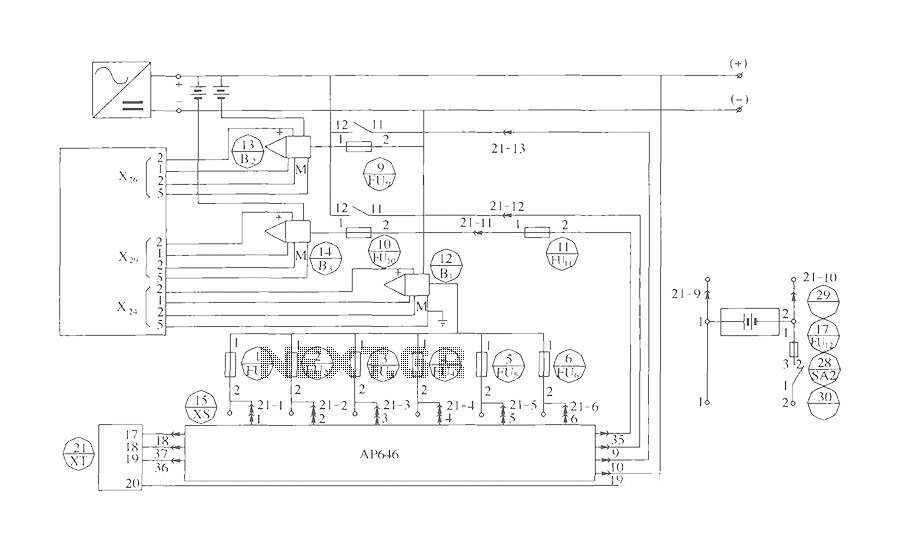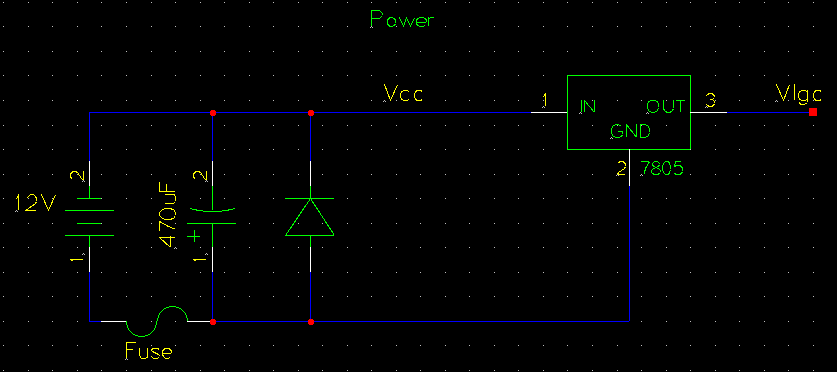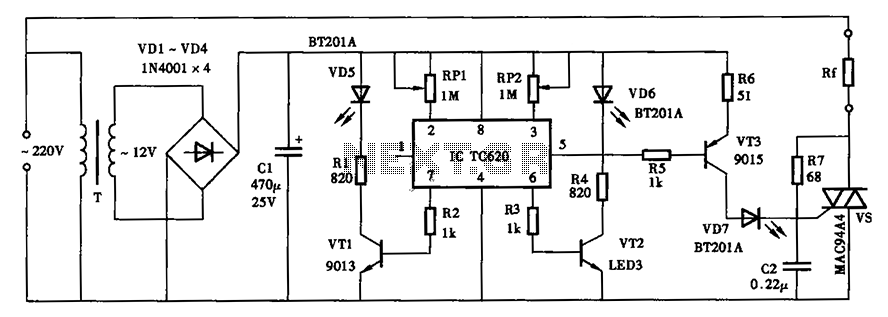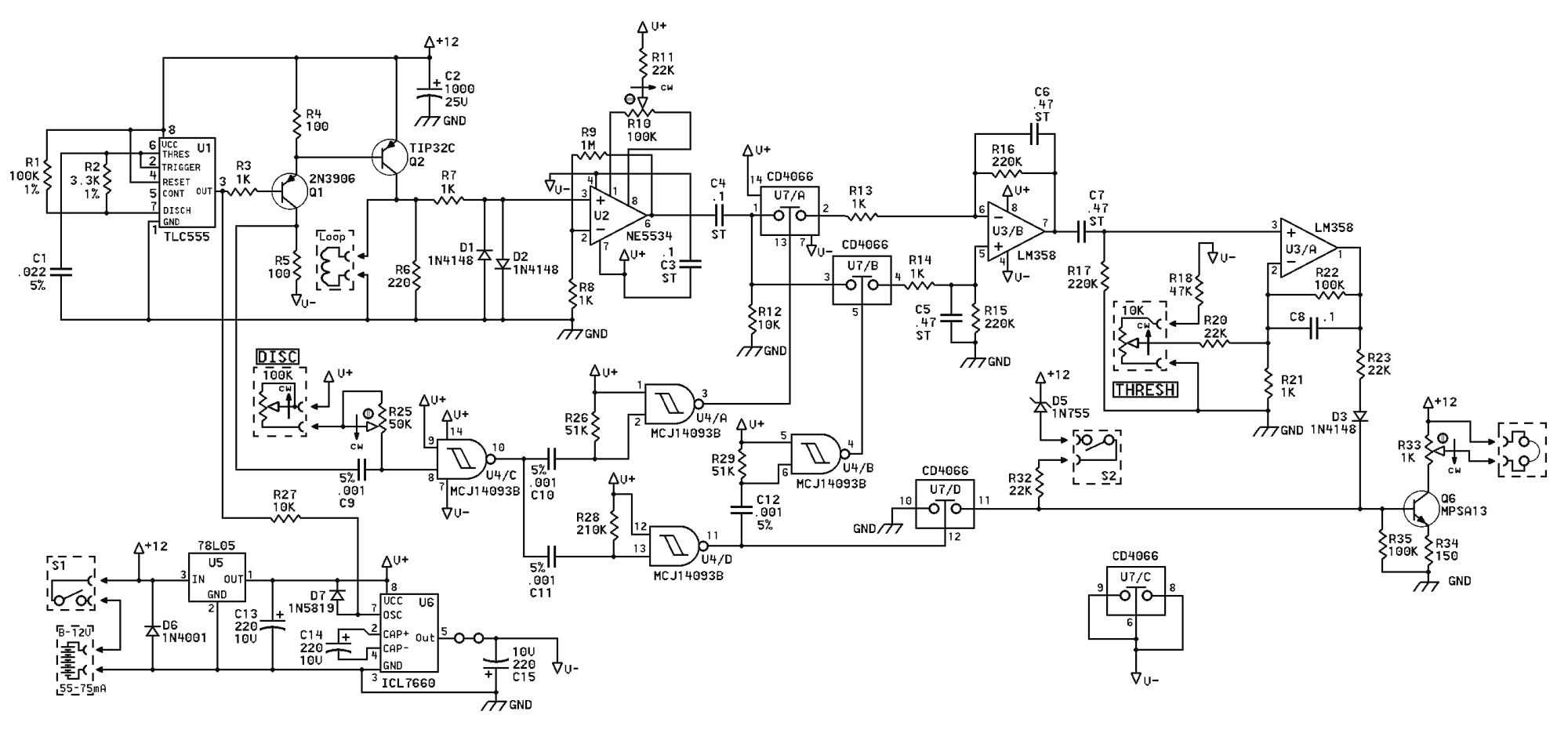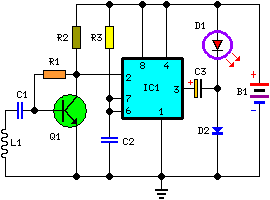
JAM (just a minute) circuit diagram

This jam circuit is designed for quiz contests, allowing participants to press their button (switch) to gain the first opportunity to answer a question. The circuit accommodates up to eight contestants, each assigned a unique number (1 to 8). The display indicates the number of the contestant who presses their button first. Additionally, a buzzer sounds simultaneously. Both the display and buzzer must be manually reset using a common reset switch. When the reset switch S9 is briefly pressed and released, all outputs of the 74LS373 (IC1) transparent latch go high as the input data lines return to Vcc through resistors R1 to R8. The outputs of IC1 connect to the inputs of the priority encoder 74LS147 (IC2) and the 8-input NAND gate 74LS30 (IC3). The output of IC3 becomes logic 0, which, after being inverted by NAND gate N2, is sent to the latch-enable pin 11 of IC1. With all input pins of IC2 at logic 1, its BCD output is 0000, which is inverted by hex inverter gates within the 74LS04 (IC5) and applied to the 7-segment decoder/driver 74LS47 (IC6), causing the display to show 0 upon reset. When any push-to-on switch S1 through S8 is activated, the corresponding output line of IC1 is latched to logic 0, and the display indicates the number associated with that switch. Concurrently, output pin 8 of IC3 goes high, leading both gates N1 and N2 to output logic 0. The logic 0 output from gate N2 inhibits IC1, preventing any further switch presses from affecting the display. Therefore, the contestant who presses their switch first will have their number displayed. In the rare case of simultaneous presses (within a few nanoseconds), the switch with the higher priority number will be shown. The logic 0 output from gate N1 activates the buzzer through the PNP transistor BC158 (T1). The buzzer and display can be reset to show 0 by momentarily pressing the reset switch S9 for the next round to begin.
This circuit operates using several integrated circuits (ICs) and discrete components to achieve its functionality. The 74LS373 is a transparent latch that holds the state of the inputs when enabled. Resistors R1 through R8 serve to pull the input lines high when the reset switch is engaged. The 74LS147 functions as a priority encoder, determining which contestant's button was pressed first based on the input signals it receives. The 74LS30 NAND gate is used to create a logic condition that ensures only the first pressed switch is acknowledged, effectively "jamming" the output to prevent any subsequent inputs from changing the displayed number.
The buzzer is driven by a PNP transistor, which acts as a switch that is activated when the logic conditions are met. The reset mechanism is crucial for allowing multiple rounds of play, as it ensures that all outputs return to a known state before the next question is asked. The design focuses on simplicity and reliability, making it suitable for real-time quiz competitions where quick responses are essential. The inclusion of a manual reset switch adds to the control participants have over the game, ensuring a fair play environment. The circuit's design can be further enhanced or modified based on specific requirements or constraints of the quiz environment.This jam circuit can be used in quiz contests wherein any par- ticipant who presses his button (switch) before the other contestants, gets the first chance to answer a question. The circuit given here permits up to eight contestants with each one allotted a distinct number (1 to 8).
The display will show the number of the contestant pressing his b utton before the others. Simultaneously, a buzzer will also sound. Both, the display as well as the buzzer have to be reset manually using a common reset switch. Initially, when reset switch S9 is momentarily pressed and released, all outputs of 74LS373 (IC1) transparent latch go high since all the input data lines are returned to Vcc via resistors R1 through R8. All eight outputs of IC1 are connected to inputs of priority encoder 74LS147 (IC2) as well as 8-input NAND gate 74LS30 (IC3).
The output of IC3 thus becomes logic 0 which, after inversion by NAND gate N2, is applied to latch-enable pin 11 of IC1. With all input pins of IC2 being logic 1, its BCD output is 0000, which is applied to 7-segment decoder/driver 74LS47 (IC6) after inversion by hex inverter gates inside 74LS04 (IC5).
Thus, on reset the display shows 0. When any one of the push-to-on switches S1 through S8 is pressed, the corresponding output line of IC1 is latched at logic 0 level and the display indicates the number associated with the specific switch. At the same time, output pin 8 of IC3 becomes high, which causes outputs of both gates N1 and N2 to go to logic 0 state.
Logic 0 output of gate N2 inhibits IC1, and thus pressing of any other switch S1 through S8 has no effect. Thus, the contestant who presses his switch first, jams the display to show only his number. In the unlikely event of simultaneous pressing (within few nano-seconds difference) of more than one switch, the higher priority number (switch no.
) will be displayed. Simultaneously, the logic 0 output of gate N1 drives the buzzer via pnp transistor BC158 (T1). The buzzer as well the display can be reset (to show 0) by momentary pressing of reset switch S9 so that next round may start. Lab Note: The original circuit sent by the author has been modified as it did not jam the display, and a higher number switch (higher priority), even when pressed later, was able to change the displayed number.
Disclaimer: All the information present on this site are for personal use only. No commercial use is permitted without the prior permission from authors of this website. All content on this site is provided as is and without any guarantee on any kind, implied or otherwise. We cannot be held responsible for any errors, omissions, or damages arising out of use of information available on this web site.
The content in this site may contain COPYRIGHTED information and should not be reproduced in any way without prior permission from the authors. 🔗 External reference
This circuit operates using several integrated circuits (ICs) and discrete components to achieve its functionality. The 74LS373 is a transparent latch that holds the state of the inputs when enabled. Resistors R1 through R8 serve to pull the input lines high when the reset switch is engaged. The 74LS147 functions as a priority encoder, determining which contestant's button was pressed first based on the input signals it receives. The 74LS30 NAND gate is used to create a logic condition that ensures only the first pressed switch is acknowledged, effectively "jamming" the output to prevent any subsequent inputs from changing the displayed number.
The buzzer is driven by a PNP transistor, which acts as a switch that is activated when the logic conditions are met. The reset mechanism is crucial for allowing multiple rounds of play, as it ensures that all outputs return to a known state before the next question is asked. The design focuses on simplicity and reliability, making it suitable for real-time quiz competitions where quick responses are essential. The inclusion of a manual reset switch adds to the control participants have over the game, ensuring a fair play environment. The circuit's design can be further enhanced or modified based on specific requirements or constraints of the quiz environment.This jam circuit can be used in quiz contests wherein any par- ticipant who presses his button (switch) before the other contestants, gets the first chance to answer a question. The circuit given here permits up to eight contestants with each one allotted a distinct number (1 to 8).
The display will show the number of the contestant pressing his b utton before the others. Simultaneously, a buzzer will also sound. Both, the display as well as the buzzer have to be reset manually using a common reset switch. Initially, when reset switch S9 is momentarily pressed and released, all outputs of 74LS373 (IC1) transparent latch go high since all the input data lines are returned to Vcc via resistors R1 through R8. All eight outputs of IC1 are connected to inputs of priority encoder 74LS147 (IC2) as well as 8-input NAND gate 74LS30 (IC3).
The output of IC3 thus becomes logic 0 which, after inversion by NAND gate N2, is applied to latch-enable pin 11 of IC1. With all input pins of IC2 being logic 1, its BCD output is 0000, which is applied to 7-segment decoder/driver 74LS47 (IC6) after inversion by hex inverter gates inside 74LS04 (IC5).
Thus, on reset the display shows 0. When any one of the push-to-on switches S1 through S8 is pressed, the corresponding output line of IC1 is latched at logic 0 level and the display indicates the number associated with the specific switch. At the same time, output pin 8 of IC3 becomes high, which causes outputs of both gates N1 and N2 to go to logic 0 state.
Logic 0 output of gate N2 inhibits IC1, and thus pressing of any other switch S1 through S8 has no effect. Thus, the contestant who presses his switch first, jams the display to show only his number. In the unlikely event of simultaneous pressing (within few nano-seconds difference) of more than one switch, the higher priority number (switch no.
) will be displayed. Simultaneously, the logic 0 output of gate N1 drives the buzzer via pnp transistor BC158 (T1). The buzzer as well the display can be reset (to show 0) by momentary pressing of reset switch S9 so that next round may start. Lab Note: The original circuit sent by the author has been modified as it did not jam the display, and a higher number switch (higher priority), even when pressed later, was able to change the displayed number.
Disclaimer: All the information present on this site are for personal use only. No commercial use is permitted without the prior permission from authors of this website. All content on this site is provided as is and without any guarantee on any kind, implied or otherwise. We cannot be held responsible for any errors, omissions, or damages arising out of use of information available on this web site.
The content in this site may contain COPYRIGHTED information and should not be reproduced in any way without prior permission from the authors. 🔗 External reference
